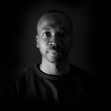STRANDED ON THE ISLAND OF CREATIVE ENDEAVOR
Isolation is necessary for many creative undertakings — but it isn’t sufficient

By Joan Van Tassel
Isolation for creative work is a two-edged sword. Many artistic endeavors require intense concentration and fierce focus. As a writer, once in a hundred times I sit down and toss off brilliant prose without a hitch — but it’s the other ninety-nine times (as is occurring now as I write) that I want to consider.
For me, writing involves four distinct phases: Germination, observation, drafting, and polishing. The first two processes call for an outward orientation — scanning the world to bring in information. The second two, drafting and polishing, require pushing my prose out into the world. (Just for the record, I enjoy observation the most, followed closely by polishing.)
None of the phases require relating to the people around me. Often enough, I experience even friends and family members as interruptions. I know it can be hard to hide and hard on them. As for me, I sometimes feel selfish and guilty. I try to bring others into my process, with mixed results. I listen to their concerns, then I tell them what I’m working on. Sometimes they are interested for a while, a few even hang in throughout the whole process. But I am obsessed, often for years at a time. It wears out the people I love and who love me, so I limit the time I bend the ears of loved ones about my work.
However, isolation from the people is not the same thing as total isolation. I don’t work all the time. I shop, I cook, I work out, I watch entertainment; occasionally, I even hang out. And I’m not isolated from the world, either. Much of the work demands my active participation in the real world, even when I’m writing fiction.
Here’s how my process worksGermination is finding and shaping an idea. Getting to clarity demands rapid cycles of inner thinking/feeling, enriched and supplemented by outward observation. The accumulation of bits and pieces — a verb here, a color there, a hook in the murk — until I can get to “Yes, this is an idea worth working on.”
So observation plays a role in my process almost from the very start. Once I settle on an idea, though, my observations become more structured. As a writer, I examine perspective (who is relating this story?), settings, sensory details, issues, and ramifications (the ‘so what’ factor). I love this part where I mine my world for observational gold. It’s what I’m best at and I’d love to leave the whole project here — but I can’t.
I need readers to complete my work: I’m thinking about them as I work. Why I need readers I cannot say, but as a child I craved attention, so I suppose it is partly that. Readers also provide the purpose behind my efforts, it’s reason for being. Sometimes I write for myself to understand how I think or feel about a personal decision or experience: Journaling serves those purposes. But writing for myself doesn’t require as much attention to meaning and detail — after all, I know what I mean.
Writing for readers is something else. I hold them in my mind because I want others to see what I saw, to feel what I felt or, conversely, to feel their own feelings under the circumstances I’m conveying. I know that I want them to feel something about an experience I consider worth sharing. All that requires repeated, careful observations of the world, as well as the anticipated reader responses.
Given all that, it isn’t surprising that I spend so much time on research!
Once I’ve formulated a clear idea for a project and carried out enough research, I start writing the first draft. I liken first drafts to laying bricks: word (slather space) word (slather space) word (slather space), and then rearranging the words before the slathers dry. This is mind-breaking, concentrated work that, except for the word count, is more labor than reward. And it does require isolation for several hours at a time. I’m also pretty stressed, so not much of a companion.
But, oooooh, the polishing. Successive revisions to the draft get it closer and closer to a final version, each one clearer and smoother than the previous iteration. I love this last phase the most: gliding, stylin,’ sailing, and soaring in the skies of previously imprecise sentences. Here, I can isolate for a period if the piece is short. For longer projects — more than fifty pages — I make sure to break up the time I spend because it requires flexibility and a certain playfulness.
In general, polishing puts me in a good mood. If deadlines permit, I’m sociable and relaxed, outgoing compared to the keyboard-chained wretch in the drafting phase. I re-connect with the people I care most about, brag about my newly-created child, show snippets of brilliant sentences and phrases, and splash the final name around.
I accept a certain isolation, comforted by the presence of the real world around me at first. Later, the reader provides some company too. To the extent my peeps enter my fictional world as I struggle to bring the characters, cultures, skies, trees, interiors, events, actions, tragedies, and victories of the world I am creating.
Writing isn’t just my job. It’s my calling. Not writing would require that I cut off and impoverish some part of my soul, that I abandon my life purpose. Some people call that isolation. I call it commitment.
If I were in solitary confinement in prison, I would study cement.

STRANDED ON THE ISLAND OF CREATIVE ENDEAVOR was originally published in C.R.Y on Medium, where people are continuing the conversation by highlighting and responding to this story.



